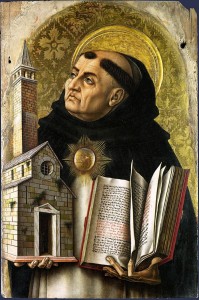Peter Kreeft, Professor of Philosophy at Boston College, has quite a knack for taking complex subjects and making them thoroughly accessible to the rest of us.
Originally a Calvinist, Kreeft became Catholic after being asked by a professor to investigate the Church’s claims that it could directly trace its origins to the one founded 2,000 years ago.
But Kreeft himself has acknowledged a fascination with the Catholic Church from an earlier age:
What initially attracted me to the Catholic Church was, first, stepping inside St. Patrick’s Cathedral in New York at about age twelve, feeling like I was in heaven (I had never been in a cathedral before), and wondering why, if Catholics got everything else wrong, as I had been taught, they got beauty so right. How could falsehood and evil be so beautiful?
As a recent revert myself, I completely understand Kreeft’s emotion. I find myself both inspired and carried away spiritually every time that I set foot in St. Patrick’s.
Kreeft, a Thomist, is a recognized expert on Aquinas’ writings and his deep, sometimes impenetrable, theology. One of Kreeft’s many books, Summa of the Summa, has been called “the most intelligent, clear, and useful access to Saint Thomas in print.” Kreeft calls Aquinas’ Summa the greatest work on theology ever written.
In the short YouTube audio presentation, embedded below, Kreeft treats us to 12 brief stories about Aquinas’ life, one of the greatest – if not the greatest – teacher of Church doctrine.
I encourage you to spend ten minutes listening to Kreeft’s carefully culled vignettes. Some are surprising, others quite funny, all are fascinating.
Among other things, Kreeft reveals the one child-like fear that this otherwise fearless man displayed, what one “stunningly simple question” he had asked at the age of five that compelled him to later become a theologian because his teacher couldn’t answer it, why his fellow students called him a dumb ox (and why the description of an ox was not far off the mark), a story that leads us to believe that Aquinas probably had a severe case of ADD, why his own brothers had kidnapped him and tempted him with a prostitute (and how Aquinas fought off the temptation), why he refused to ride a donkey, and my personal favorite, how he wrote his massive tomes:
He would sit surrounded by four scribes and he would dictate one sentence to one, the next sentence to the second, and so forth. He spoke four times as fast as they wrote. So, by the time he finished the fourth sentence, he’d dictate the fifth one to the first scribe. Aquinas’ mind was as fast as his body was slow [he probably weighed about 300 pounds].
Kreeft reminds us that Aquinas wrote, in total, about 50,000 pages of text – at a time when all writing was done with a quill pen. And he hardly ever revised anything, including his Summa which was about 4,000 pages long, a text, he said, that was meant for beginners! And Kreeft reminds us that this greatest of all works, even at that staggering length, remained purposefully unfinished.
If you want to learn more about this fascinating philosopher and Doctor of the Church, whom Kreeft says is best described as innocent, I can’t think of a better place to start.
Peace
Image Credit: Wikimedia Commons













